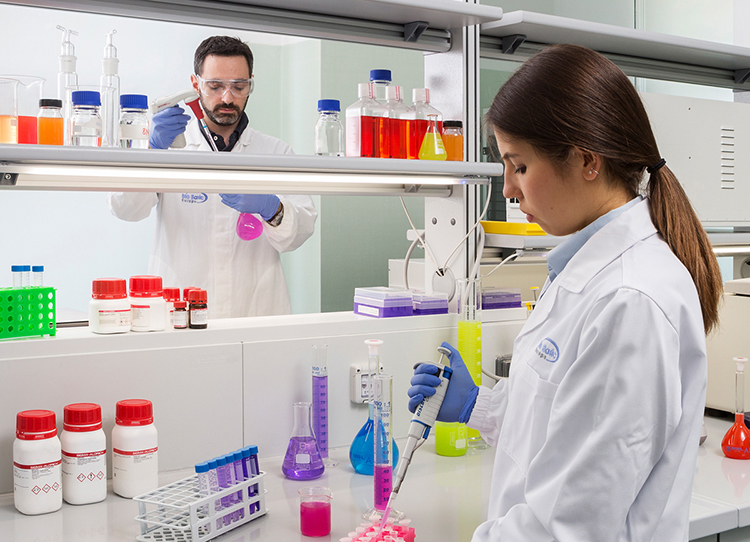EVALUATION OF THE ABILITY TO MODULATE THE SAMPLE ION OF SPECIFIC MARKER (COLLAGEN, ELASTIN, HYALURONIC ACID, MMP-1 ...)
Aim of the test is to evaluate the ability of a cosmetic sample to modulate the synthesis of specific markers (collagen, elastin, hyaluronic acid, MMP-1 ...) in cultures of keratinocytes / fibroblasts treated with the sample to be tested.
Evaluation of Depigmenting Activity
The purpose of the test is to evaluate the depigmenting/lightening/anti-spot action of the tested sample on a melanocyte culture.
Evaluation of Soothing Activity
The purpose of the test is to evaluate the soothing action of the tested sample on tissues
Evaluation of Anti-Pollution Action
The purpose of the test is to evaluate the cleansing capacity of the tested sample against environmental pollutants (atmospheric particulate matter).
Evaluation of the Ability to Modulate Marker Expression Using Immunocytochemistry Techniques
This test allows the in vitro evaluation of a sample’s ability to modulate the expression of specific cellular markers through immunocytochemical detection.
IN VITRO EVALUATION OF SCAVENGER ACTIVITY
Aim of the test is to evaluate if the tested sample, at different concentrations, is able to neutralize the reactive oxygen species (ROS free radicals).
IN VITRO EVALUATION OF THE REGENERATING ACTIVITY
Aim of the test is to assess the ability of a cosmetic sample to stimulate cell regeneration of fibroblasts/keratinocytes or other cellular lines in vitro.
IN VITRO EVALUATION OF LIPOREDUCING ACTIVITY
The purpose of the test is to determine the liporeductive activity of a sample both through volumetric assessment of adipocytes (morphological analysis) and by measuring the variation in triglyceride accumulation in adipocytes.
IN VITRO EVALUATION OF VOLUMIZING ACTIVITY
The purpose of the test is to determine the volumizing activity of a sample both through volumetric assessment and by measuring the variation in triglyceride accumulation in adipocytes.
IN VITRO EVALUATION OF MUCOADESIVITY
The test is performed on cell cultures of the mucosa or on reconstructed human mucosal models to evaluate the in vitro mucoadhesiveness of the tested sample. Mucoadhesiveness is determined by assessing the percentage of inhibition of the lectin-glycoprotein binding in mucosal cells or on reconstructed human mucosal models in vitro.
Evaluation of Intestinal Absorption
The purpose of the test is to evaluate, in vitro, the absorption of specific markers contained in a sample using cellular models of intestinal cells (Caco-2) or reconstructed tissues. (Cosmetico/dispositivi/integratori)
IN VITRO EVALUATION OF ANTIOXYDANT ACTIVITY
Aim of test is to assess if the tested sample, at different concentrations, is able to prevent the sample ion of reactive oxygen species (ROS) (ANTIOXIDANT ACTIVITY)


